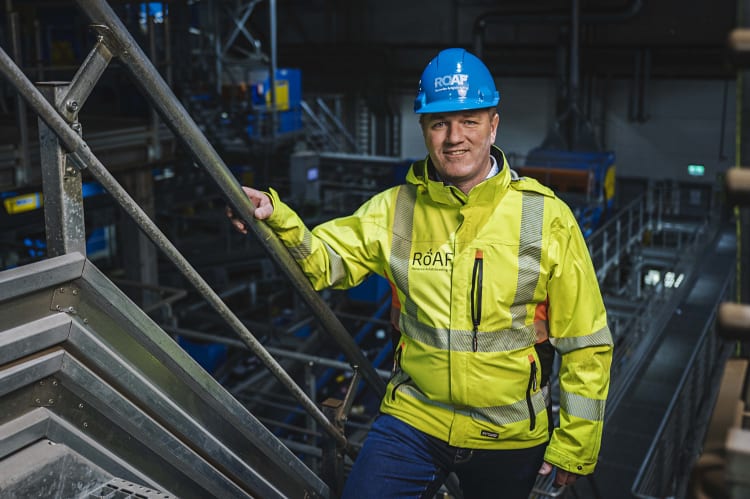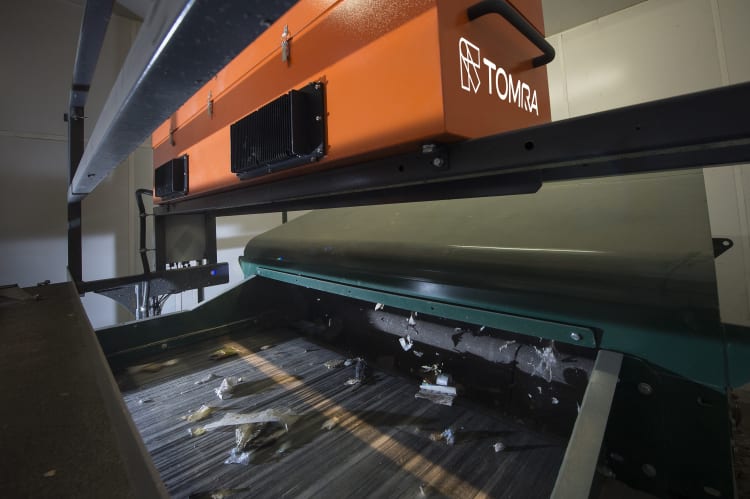In 2014, the plant has already set itself ambitious targets, but looking back the combination of process optimization and the latest equipment has led to a considerable increase in the recovery of plastics and municipal solid waste. Moreover, whereas in 2014 sorting targets were set at 2,500 tons of plastics and 6,000 tons of organics per year, the capacity in 2021 reaches 3.600 tons for plastics and 11500tons for biowaste. Finally, since the automation of the plant in 2014, manual sorting efforts are no longer required, and personnel could be allocated to other tasks within the company. Looking at the long-term objectives, Roaf aims to build on its current achievements and the experience gathered to reach reuse and recycling rates of 70% in 2030. Its ambition is in line with the targets set by the EU which demand plastic recycling rates of 55% and those of municipal solid waste of 60% by 2030.
Tom Roger Fossum, Technical Director at Roaf, commented: “Since the beginning of our collaboration, we have been confident that we have chosen the right partners. Both Tomra and Stadler have always been at hand and undertaken considerable efforts, using their synergies, and combining them with our local waste management experience to jointly realize the project. As results have shown, everything paid off.” Oliver Lambertz, VP and Head of Business Development at Tomra Recycling adds: “I am accompanying the project right from the start and could see how initial thoughts and trials turned into a ground-breaking best-practice project. What we now see is an optimized waste management system, making the separate collection of plastics in this case redundant. At the same time, we could increase recovery rates and take most of our resources. Actually, very little is lost.”

Tomra’s contribution to system change
Roaf and its system change can be seen as a best practice example for optimized waste management and recycling. Although this system is not applicable to all countries because of non-homogenous infrastructures, in this case the plastics and waste recovery rates are higher when plastics are not collected separately but together with organics and residues in the municipal solid waste container. But the success would not be as good without the proper technology. The combination of an efficient waste management and advanced sorting technologies makes mixed waste sorting win the game in the South of Norway and Roaf rank second in processing household waste by volume in Norway.
Joint forces working towards a common goal
Making a difference and enabling change don’t come alone. It requires smooth and targeted collaboration, a common goal, and vision. The Norwegian waste management company pursued the vision to level up recycling rates and exploit the full value of our resources before they are lost. To turn its ambition into reality, choosing the right partners became crucial. “Our goal was to automate waste sorting and optimize our waste management system considerably. We have been working with Tomra for ages and have always been convinced of their technology, expertise, and service. They go the extra mile, partner to find the best solution, and support its implementation and ongoing process optimization. For us, there was no other way than collaborating with them again”, stressed Tom Roger Fossum. Finally, three purpose-driven companies in the sector, namely Roaf, Tomra, and Stadler, joint efforts to turn Roaf’s visions into reality and show that there is not only one approach to efficient waste management and that collaboration is a door-opener when it comes to advancing recycling.


